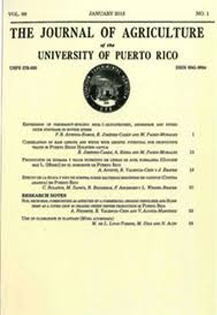Abstract
Drought mortality of juvenile trees is a major cause for failure of
reforestation projects. Portable devices such as passive radiative dew condensers can often provide 0.15 L/day of water in situ, possibly sufficient for tree survival until roots can access groundwater, allowing self-sustainability. To evaluate growth and survivability of juvenile trees of Tabebuia heterophylla Britton and Swietenia macrophylla King under such low water amounts, juvenile trees received approximately 0.033, 0.067, 0.134, 0.201 and 0.268 L/tree/day, representing fractions (relative evapotranspiration or RET) of 0.125, 0.25, 0.50, 0.75 and 1.00 of the evapotranspiration demand (ETo). The experiment lasted 60 days for S. macrophylla and 90 days for T. heterophylla. All T. heterophylla juvenile trees survived even at the lowest irrigation rate. However, S. macrophylla juvenile trees began dying at RET < 0.5, with only 60 percent surviving at RET = 0.25 (0.067 L/day) and 100 percent
mortality occurring at RET = 0.125 (0.033 L/day). Water requirements of 0.134 L/day, necessary for full survival of both species, were within the typical production capacity of 1-m2 dew condensers. However, a greater safety factor is obtained using drought tolerant species such as T. heterophylla, which can survive under water application rates as low as 0.03 L/day.

